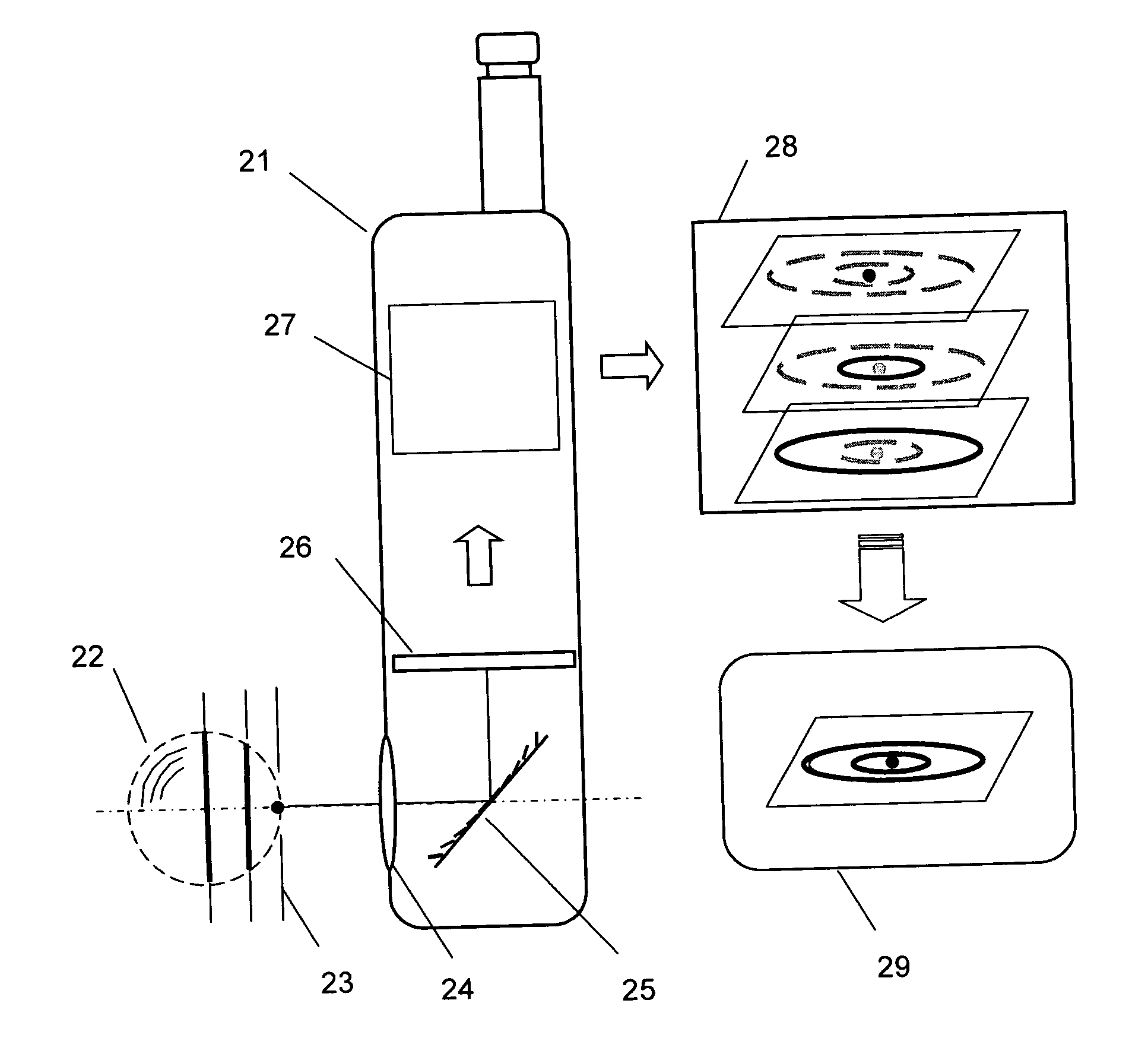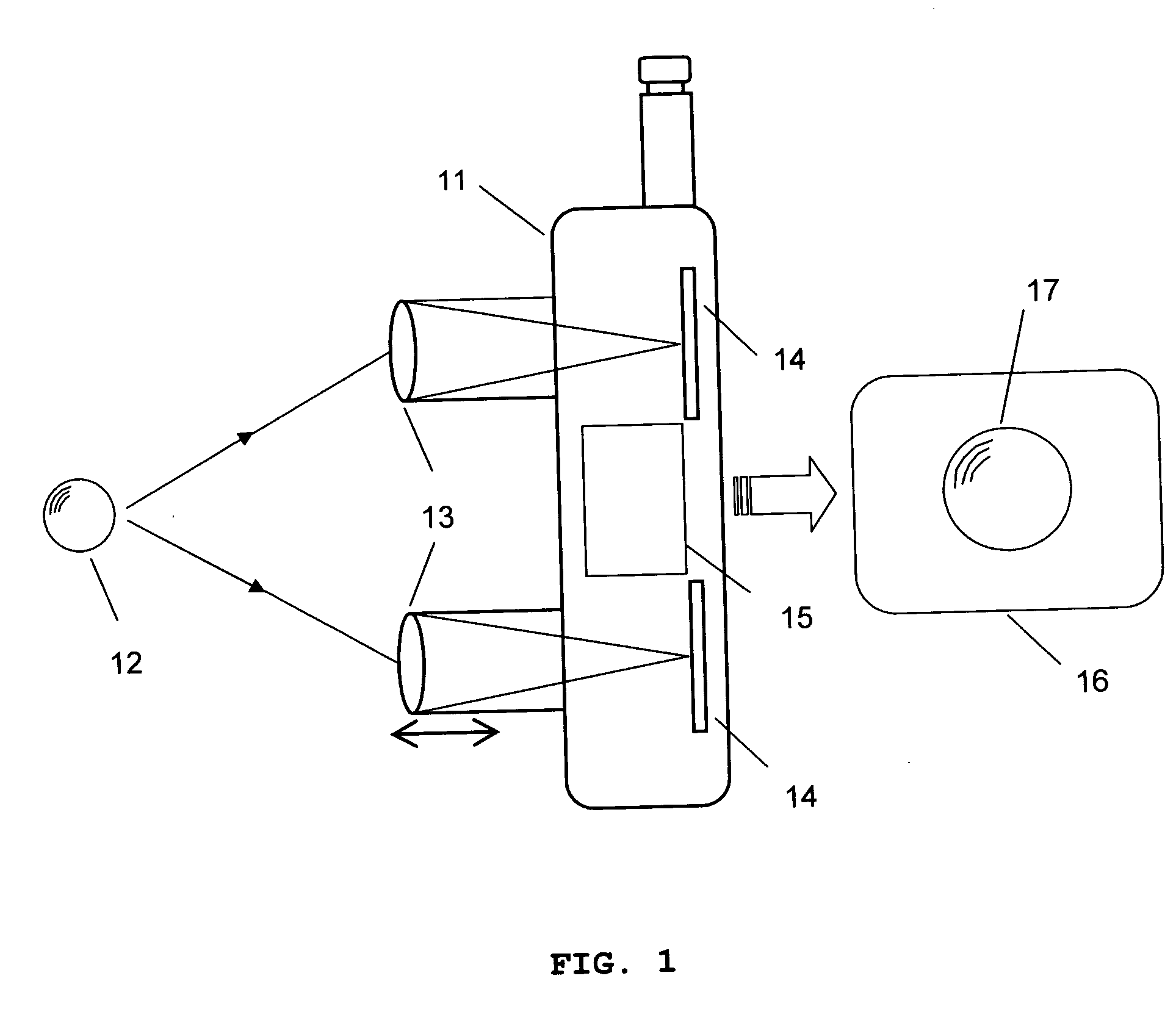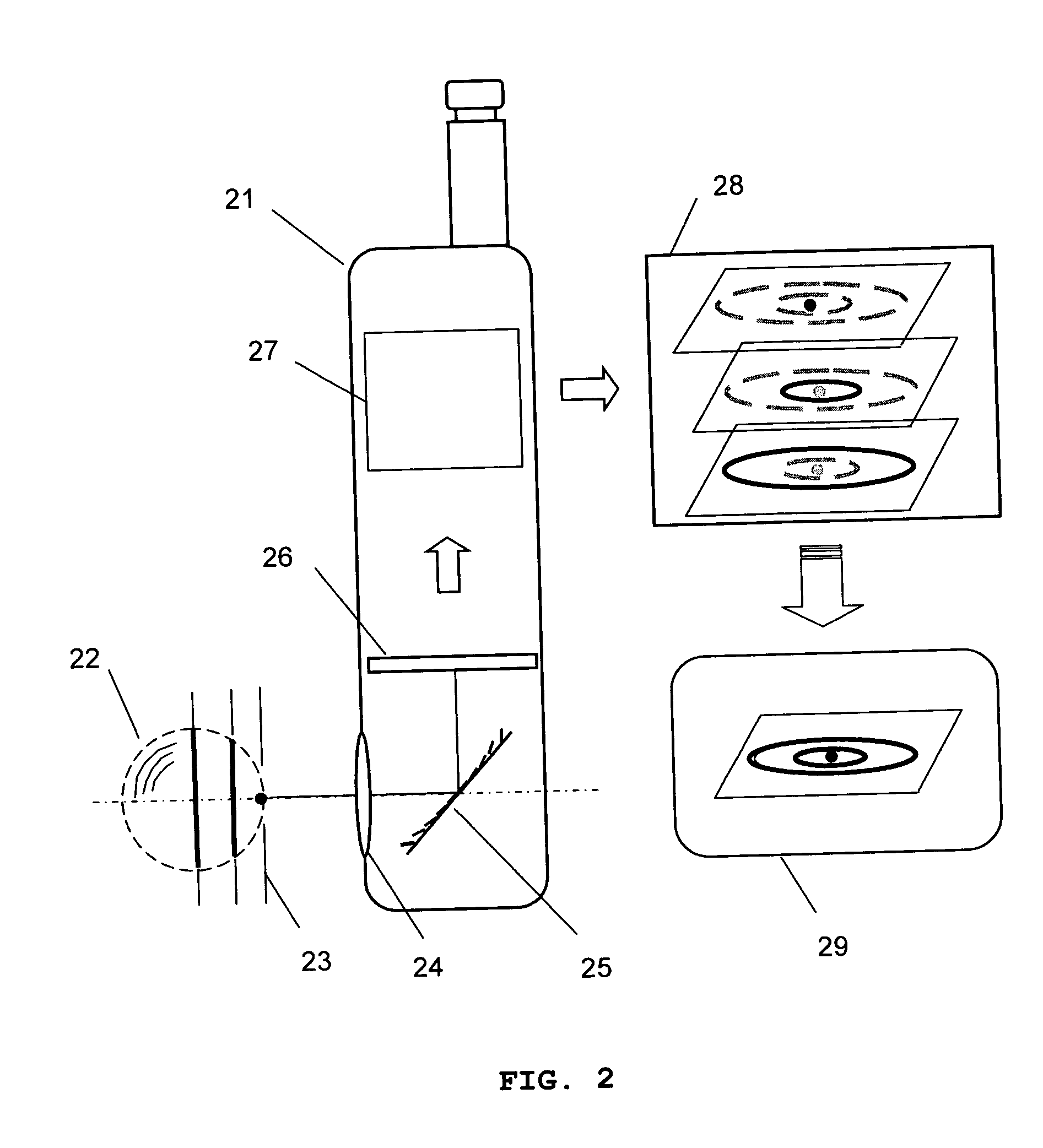Cellular phone camera with three-dimensional imaging function
a three-dimensional imaging and phone camera technology, applied in the field of three-dimensional imaging functions of cellular phones, can solve the problems of limiting the depth resolution of three-dimensional images, unable to achieve real-time three-dimensional images, and difficult to devise two cameras in a pocket-sized cellular phone, so as to improve optical efficiency.
- Summary
- Abstract
- Description
- Claims
- Application Information
AI Technical Summary
Benefits of technology
Problems solved by technology
Method used
Image
Examples
Embodiment Construction
[0042]FIG. 1 shows a schematic diagram of present three-dimensional imaging function in a cellular phone 11. From the object 12, two lenses 13 focus the images onto the imaging sensors 14. The captured images are processed by the image processing unit 15 to display the three-dimensional image 17 in the display unit 16 if the system is attached with displaying device. For the purpose of three-dimensional imaging, two lenses and two imaging sensors are necessary. Since this scheme uses two lenses, two imaging sensors altogether, the embodiment of the three-dimensional imaging function in a cellular phone 11 is quite large, complicated and hard to be accomplished.
[0043]FIG. 2 shows a schematic diagram for the present invention, cellular phone camera 21 with three-dimensional function accomplished by the variable focus micromirror array lens. Only one imaging sensor 26 is installed in the cellular phone 21 to get a three-dimensional image from the object 22. From the object 22, two-dim...
PUM
 Login to View More
Login to View More Abstract
Description
Claims
Application Information
 Login to View More
Login to View More - R&D
- Intellectual Property
- Life Sciences
- Materials
- Tech Scout
- Unparalleled Data Quality
- Higher Quality Content
- 60% Fewer Hallucinations
Browse by: Latest US Patents, China's latest patents, Technical Efficacy Thesaurus, Application Domain, Technology Topic, Popular Technical Reports.
© 2025 PatSnap. All rights reserved.Legal|Privacy policy|Modern Slavery Act Transparency Statement|Sitemap|About US| Contact US: help@patsnap.com



